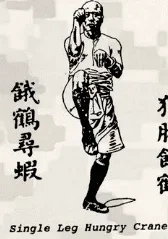Just realized I wrote this poorly. I definitely wasn't saying Muay Thai has no clinch. I guess I was trying to say is what people think of as "Thai clinch" in MMA etc, or what muay khao specialists do, are not exclusive to Muay Thai at all, they're common across the entire region. Nothing special, really.
Lots of arts have clinch work, but most of them don't clinch the same way the Thais do. Just like lots of arts have kicks, but they don't necessarily kick the same way Tae Kwon Do specialists do.There are just different types of clinch depending on the art, but again, if Muay Thai is the only Asian standup full contact art you know, it's a "Thai" clinch to you. But if you'd trained three arts with the same clinch stuff in it, you'd have a hard time calling it Thai. In Asian arts that allow basically all the standup strikes and clinching, throwing the nationality doesn't matter so much. A lot of these countries have the same arts, just different names.
As I am fond of saying, in China they just call it "food".
There are probably some other systems from countries close to Thailand which work in a similar way due to cross-pollination (Lethwei, for example), but they are much less well known to the world-wide public than Muay Thai. In modern MMA circles almost every fighter has at least some Muay Thai training, but I don't know if there are any UFC fighters with a Lethwei background.
If I had a gripe about MMA commentary calling something a "Thai clinch", it's that the term is almost exclusively used to describe one particular position, i.e. the "plum" (double-collar tie). Muay Thai clinch work involves a lot more than just that one position.



